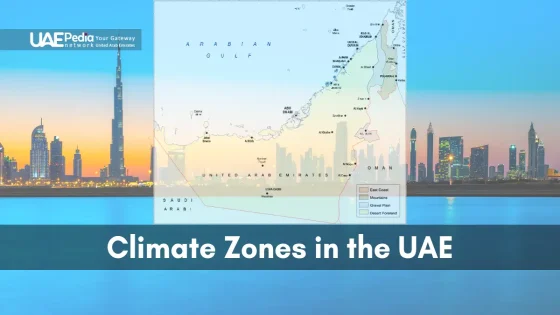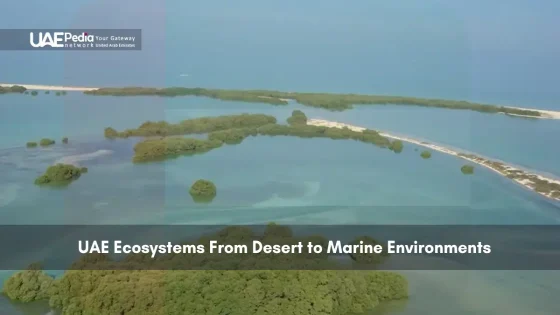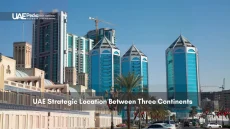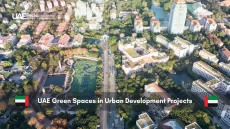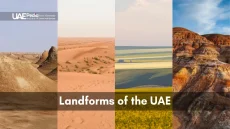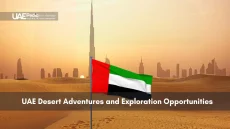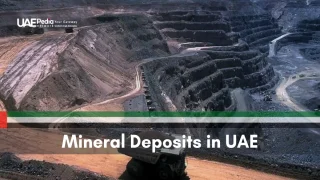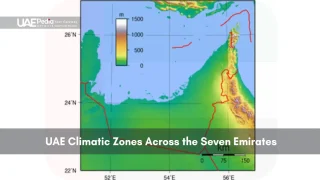How does a desert nation quench its thirst when rain is rarer than a quiet Friday morning in Dubai? The answer lies beneath the dunes—vast underground reservoirs holding over 640 billion cubic meters of water. But here’s the twist: less than 3% of that groundwater is fresh enough to drink.
In the united arab emirates, these hidden water banks aren’t just geological features—they’re lifelines. Arid climates demand innovation, and here, managing every drop becomes an art form. Think solar-powered desalination plants, AI-driven irrigation systems, and ancient falaj channels reimagined for modern cities.
We often marvel at skyscrapers piercing clouds, but the real engineering marvels? They’re underground. Balancing rapid growth with sustainability means treating freshwater like liquid gold—precious, finite, and worth protecting for future generations.
Key takeaways:
- Groundwater supplies over 60% of the nation’s agricultural needs despite limited freshwater reserves
- Cutting-edge tech blends with traditional methods to stretch every drop
- Sustainable management directly supports food security and urban development
Understanding the Geology of UAE Aquifers
Beneath the sun-baked sands lies a hidden blueprint—nature’s intricate layering of gravel, sand, and limestone that tells the story of how this arid region stores its most precious resource. Imagine these underground reservoirs as a multi-layered cake, each slice holding clues about water storage and movement across millennia.
Aquifer Composition and Formation
Geophysical studies reveal a mosaic of materials beneath the arab emirates. Gravel acts like highways for water flow, while silt layers slow it down like natural speed bumps. Limestone formations—common in coastal areas—add complexity, their porous structures trapping water like sponges.
Subsurface Structures and Stratigraphy
Borehole data shows how ancient river systems and shifting dunes created distinct geological tiers. These stacked layers determine where water settles and how quickly it replenishes. In some areas, impermeable rock formations create natural “storage tanks” that prevent saltwater intrusion.
Why does this matter? The right mix of sand and gravel can filter impurities naturally, reducing reliance on desalinated water. But too much limestone might mean faster depletion rates. It’s like having a bank account where withdrawals need to match deposits—except here, the currency is liquid survival.
Current State of Freshwater Resources in the UAE
Picture this: a bustling city in the desert, thriving despite receiving less rain than a cactus needs. Where does the water come from? The answer unfolds in a delicate dance between futuristic tech and ancient underground reserves.
Let’s break it down: over 90% of drinking water in urban hubs flows from high-tech facilities that turn seawater into crystal-clear H₂O. Coastal giants like Abu Dhabi showcase reverse osmosis marvels running 24/7—think of them as water factories humming louder than a Friday night in Marina Bay. But venture inland, and you’ll find a different story unfolding beneath date palm groves.
Rural farms still rely heavily on groundwater management systems, with 60% of agricultural needs met through wells tapping into underground reserves. Here’s the catch: while desalination keeps taps flowing in cities, brackish water quality limits its use for crops. Farmers near Al Ain whisper about salt levels creeping up like uninvited guests at a desert feast.
Three pressing challenges emerge:
- Coastal areas battle energy-intensive desalination costs
- Inland regions face declining water tables and salinity spikes
- Urban growth outpaces natural recharge rates
Cities like Abu Dhabi lead the charge with AI-powered monitoring systems, while Liwa’s date farms test solar-powered drip irrigation. New smart meters track usage in real-time—because in this arid wonderland, every drop tells a story of survival and innovation.
Sustainable Management of UAE aquifers
Imagine refilling a giant underground water bottle in one of the driest places on Earth—that’s the daily hustle for hydrologists here. Teams now blend Bedouin water wisdom with satellite tech to protect these life-giving reserves. Smart pumping limits? Check. Artificial recharge projects? Double-check.
Here’s how it works: Farmers near Al Ain use sensors to track extraction rates, while engineers redirect treated stormwater into absorption basins. A recent study showed reconstructed recharge techniques boosted reserves by 12% in three years. “We’re not just slowing depletion—we’re reversing it,” says a local water strategist.
Three game-changing approaches:
- Solar-powered injection wells that push purified water back underground
- AI models predicting rainfall patterns to optimize recharge timing
- Community programs teaching circular water use—think date farm runoff nourishing parklands
The real magic happens when ancient falaj channels meet smart meters. Villagers in Hatta now sync traditional irrigation with real-time aquifer data tablets. It’s like giving centuries-old practices a tech-powered upgrade.
“Our grandparents measured water by camel’s thirst—we measure it in cubic meters per second. Both matter.”
With 83% of monitored wells showing stable salinity levels since 2022, the blueprint exists. Combine nature’s patience with human innovation, and these underground treasures might just outlast the skyscrapers above them.
Groundwater and Desalination: Balancing Water Supply
In a land where the sun reigns supreme, two water heroes emerge from the shadows. Underground reserves whisper tales of ancient hydration, while gleaming desalination plants hum with futuristic purpose. Together, they form a thirst-quenching tag team unlike any other.
Coastal cities thrive on reverse osmosis magic—massive facilities turning Gulf waters into crystal streams. Meanwhile, inland farms tap into earth’s hidden pockets, where careful extraction keeps date palms dancing. The secret sauce? A tech-savvy choreography that switches sources like a DJ mixing desert beats.
| Source | Tech Used | Best For | Challenges |
|---|---|---|---|
| Desalination | Reverse osmosis | Urban demand | Energy costs |
| Groundwater | Smart sensors | Agriculture | Salinity control |
Farmers near Al Ain know the drill—literally. When summer peaks strain wells, desalted backups kick in automatically. Cities return the favor during maintenance shutdowns, leaning harder on underground reserves. It’s like watching a water waltz where neither partner misses a step.
New membrane tech slashes energy use by 40% in latest plants. Drones now map groundwater levels faster than camels ever could. The region’s water maestros have mastered one truth: balance isn’t static—it’s an ever-evolving rhythm between earth and innovation.
Role of Desalination Plants in the UAE
What if you could turn ocean waves into drinking glasses? That’s the daily magic at coastal facilities where engineers deploy multi-stage flash distillation—a process hotter than desert noon. Seawater gets heated, vaporized, and condensed into pure H₂O through pressure chambers that mimic nature’s rain cycle.
Desalination Technologies and Processes
Abu Dhabi’s reverse osmosis plants work like supercharged coffee filters. Saltwater pushes through membranes thinner than a date palm leaf, leaving impurities behind. These systems now produce 1.5 billion liters daily—enough to fill 600 Olympic pools. Masdar City’s solar-powered pilot project? It’s shaping tomorrow’s hydration playbook with zero-emission tech.
Impact on Drinking Water Supply
Desalination feeds 90% of urban taps through a distribution network stretching from skyscrapers to suburban homes. Smart grids reroute supplies during peak demand, while treated wastewater blends with purified streams to stretch resources. “Our plants hum louder than Friday traffic,” laughs a plant manager. “But they’re why your morning coffee tastes normal in this desert wonderland.”
Three breakthroughs keep the flow steady:
- Hybrid systems combining thermal and membrane methods for efficiency
- AI predicting maintenance needs before pipes groan
- Brine byproducts repurposed for industrial cooling
“We’re not just making water—we’re engineering climate resilience one molecule at a time.”
Historical Evolution of Water Resources in the UAE
Picture a desert oasis where water whispers tales of transformation—every well and pipeline holds chapters of survival rewritten over generations. The story begins with hand-dug wells in the 1950s, when communities measured wealth in water levels rather than oil barrels. Back then, 100% of drinking supplies came from underground sources, with camel caravans hauling life-giving cargo across dunes.
The 1970s oil boom flipped the script. Abu Dhabi’s first desalination plant opened in 1976—a game-changer that let cities bloom like mirages made real. By 1990, seawater treatment supplied 75% of urban needs. Farmers watched irrigation evolve from falaj channels to computerized drip systems within 50 years.
Three seismic shifts reshaped water use:
- 1980s: Groundwater extraction peaked at 22x natural recharge rates
- 2003: Nationwide monitoring systems tracked depletion levels in real-time
- 2020s: Solar-powered smart grids balanced desalination with aquifer recovery
Today’s tech-savvy approach still honors Bedouin wisdom. Modern engineers study ancient cistern designs while AI predicts rainfall patterns. “We’ve gone from counting water jars to tracking cloud formations,” laughs a Dubai hydrologist. “But the goal remains—keep the balance between earth and ambition.”
“Our grandparents’ wells held stories. Our pipelines hold solutions.”
From camel-skin bags to reverse osmosis marvels, every innovation reflects a simple truth: managing water here isn’t just science—it’s the art of thriving against impossible odds.
Innovative Groundwater Recharge Strategies
What if every raindrop in the desert could be multiplied by human ingenuity? Engineers here are flipping the script on water scarcity by pumping surplus desalinated supplies back into the earth. It’s like reverse engineering nature’s hydration cycle—with solar panels and smart sensors as co-stars.
- Al Dhaid’s underground storage banks using treated stormwater
- Solar-powered injection wells near Liwa that push desalinated water 200 meters below sand dunes
- AI-guided wadi restoration in Hatta, where natural drainage channels get tech upgrades
| Method | Technology | Efficiency | Best For |
|---|---|---|---|
| Traditional Wadi Recharge | Gravity-fed channels | Slow but sustainable | Remote valleys |
| Modern Injection Wells | Solar pumps + IoT sensors | 20x faster replenishment | Urban fringe areas |
Farmers near Al Ain now sync irrigation schedules with aquifer levels using real-time dashboards. Drip systems water date palms precisely when underground sources hit optimal levels—no guesswork, just geeky precision. “We’re not just refilling wells—we’re rewriting desert hydrology,” says a Dubai-based water engineer.
“Our grandparents prayed for rain. We engineer it underground.”
These strategies turn sand into sponge cities. Treated wastewater irrigates parks by day while excess flows into recharge basins at night. It’s a 24/7 water ballet where every move counts in this thirsty landscape.
Urban and Rural Water Consumption Trends
Ever wonder why city taps flow freely while desert farms measure each drop like precious gems? The answer lies in a tale of two thirsts—glass towers sipping high-tech hydration versus date palms rooted in ancient wadi wisdom.
Metropolitan areas gulp down desalinated water like marathon runners at a hydration station. Dubai’s skyscrapers alone consume enough daily to fill 1,500 Olympic pools. Meanwhile, rural communities near natural water channels still time irrigation to seasonal flows, their crops thriving on brackish groundwater that city dwellers wouldn’t touch.
| Area | Daily Consumption | Main Source |
|---|---|---|
| Urban | 550 liters/person | Desalination plants |
| Rural | 220 liters/person | Groundwater wells |
Oil revenues fuel this split-screen reality. Cities enjoy pipelines straight from gleaming treatment facilities, while remote wadi villages maintain century-old water-sharing traditions. Yet both face mounting pressure—urban growth strains desalination capacity, while farm wells sink deeper each year chasing vanishing aquifers.
Three factors reshape consumption patterns:
- Air-conditioned megamalls vs sun-baked crop fields
- Tourism’s thirst vs agriculture’s needs
- Smart meters in apartments vs hand-dug wells in oases
“Our oil built water towers, but our sand teaches water wisdom.”
The challenge? Balancing flashy infrastructure with gritty sustainability. Whether you’re showering in a penthouse or watering camels at dawn, every drop tells a story of adaptation in this land of contrasts.
Technological Advances in Water Treatment
What if you could transform sand into sparkling water? That’s exactly what cutting-edge treatment tech achieves daily here. Engineers now deploy nanobubbles and graphene filters that purify seawater faster than a desert mirage vanishes. Think of it as a high-tech magic trick—turning the salty sea into life-giving streams.
These breakthroughs don’t just change local water quality—they’re reshaping the global playbook. Solar-powered membranes in Abu Dhabi work 40% more efficiently than conventional systems. Dubai’s new smart plants even extract lithium from brine, turning waste into wealth. “We’re not just filtering water,” says a plant manager. “We’re mining liquid gold from the sea.”
Three innovations leading the charge:
- AI-driven systems predicting chemical dosing needs down to the milliliter
- Portable purification units that fit in backpacks for remote areas
- Bacteria-killing UV arrays powered entirely by sunlight
| Technology | Impact | Global Adoption |
|---|---|---|
| Reverse Osmosis 2.0 | 65% less energy use | 23 countries |
| Atmospheric Water Generators | Harvests from humidity | Desert regions worldwide |
While coastal nations wrestle with rising sea levels, these advancements turn threats into solutions. Treated wastewater now irrigates 70% of public parks in major cities—a silent revolution in reuse. The real game-changer? Systems that adapt to environmental shifts faster than sand dunes reshape under the shamal winds.
“We used to fight the sea for fresh water. Now we dance with it.”
From robotic pipe inspectors to self-cleaning filters, the water world evolves daily. These technologies don’t just sustain communities—they prepare them for a future where change is the only constant.
Environmental and Regulatory Framework
Who polices the invisible rivers flowing beneath our feet? In the abu dhabi emirate, it’s a blend of sharp legal frameworks and tech-powered oversight keeping water systems honest. The Environment Agency Abu Dhabi (EAD) acts as both guardian and innovator, balancing strict rules with smart solutions.
Policy Reforms and Legal Framework
Think of water laws here as playbooks for survival. Since 1998, reforms like Law No. 2 have transformed extraction limits from vague guidelines into precise algorithms. The 2005 Utilities Law took it further—requiring real-time data sharing between farms and regulators. “We went from guesswork to grid systems,” notes an EAD strategist.
Recent updates mandate solar compatibility for new wells. Farmers now get subsidies for smart irrigation tech, while industries face audits if usage spikes. The groundwater protection policy acts like a digital leash, alerting officials before pumps hit danger zones.
Government Initiatives and Investments
Abu dhabi water projects now rival sci-fi prototypes. The emirate’s $1.2 billion infrastructure overhaul includes:
- AI-powered treatment plants that adjust output based on demand forecasts
- Underground sensor grids mapping salinity shifts hourly
- Solar desalination hubs doubling as marine research centers
One game-changer? The “Water Eco-Lab” program turning schools into conservation incubators. Students compete to design apps tracking household usage—proving sustainability starts early here.
“Regulations aren’t shackles—they’re the guardrails keeping our future afloat.”
With the environment agency abu dhabi merging Bedouin water ethics with blockchain monitoring, every policy becomes a stepping stone. It’s not just about managing resources—it’s about rewriting desert survival rules for the next century.
Case Studies from Abu Dhabi and Al Ain
What do date palms and skyscrapers have in common? In the dhabi emirate, both thrive through a thirst-quenching tango between innovation and tradition. Let’s explore two urban oases rewriting desert survival rules.
Abu Dhabi’s solar desalination initiative stands out. The agency abu dhabi partnered with dhabi water electricity authority to launch a plant producing 50 million liters daily—enough for 150,000 homes. Sensors track groundwater levels 24/7, redirecting excess desalinated water to recharge parched aquifers. “We’ve turned our coastline into a water factory,” says a project manager.
Al Ain takes a different approach. Farmers here blend ancient aflaj channels with modern drip tech. Treated wastewater from 12 neighborhoods now irrigates 80% of public parks. The agency abu dhabi reports a 30% drop in groundwater use since 2021—without sacrificing crop yields.
Three lessons emerge from the dhabi emirate:
- Hybrid systems work best—Al Ain’s date farms use 40% less water by pairing soil sensors with traditional irrigation schedules
- Community buy-in matters—Abu Dhabi’s “Water Champions” program trains residents to spot leaks and optimize usage
- Infrastructure must adapt—both cities now build drainage systems that funnel stormwater into underground reserves
“We don’t fight the desert—we dance with it. Every drop gets multiple encores.”
These case studies reveal a blueprint others can follow. From skyscraper-cooling plants in the dhabi emirate to Al Ain’s wastewater-fed palm groves, solutions emerge when tech serves tradition. The key? Treat water systems like living organisms—constantly evolving, always connected.
Insights from Recent Research on Aquifer Dynamics
What if X-ray vision could map Earth’s hidden waterways? A 2023 study cracked the code using seismic waves, gravity shifts, and electrical resistance patterns. These tools act like medical scanners for the planet—revealing underground layers we’ve never seen before.
Findings from Integrated Geophysical Investigations
Researchers discovered unconfined aquifers stretching deeper than previously thought—some reaching 150 meters below sand dunes. Magnetic anomalies helped pinpoint fractures where freshwater mingles with ancient salt deposits. “It’s like finding veins in a rock,” notes the lead scientist. “Now we know where to tap and where to protect.”
Three game-changing insights emerged:
- Quaternary deposits hold 40% more water storage potential than earlier estimates
- Underground structures influence energy needs for extraction—saving 15% in water electricity costs
- Resistivity maps expose saltwater intrusion paths before they reach wells
These discoveries reshape how we manage groundwater resources. Farmers now receive alerts when pumping risks salinity spikes. Cities adjust desalination schedules based on aquifer health reports. It’s a win-win—protecting water resources while cutting energy bills.
“We’re not just mapping rocks—we’re charting the future of desert hydration.”
The study’s 3D models help planners balance urban growth with groundwater resource limits. Solar farms might soon double as recharge zones, using excess energy to pump treated water underground. Every discovery fuels smarter decisions in this delicate dance between thirst and sustainability.
Integrated Approaches to Water Resource Management
Imagine a water symphony where desalination plants hum backup vocals to recharge systems’ basslines. That’s the harmony engineers conduct daily across the eastern part of the region. By blending treated wastewater reuse with smart extraction limits, cities now stretch every drop like desert nomads rationing precious oasis finds.
- Solar-powered treatment plants transform sewage into irrigation gold
- Underground injection wells act as rainy-day savings accounts
- Real-time usage dashboards sync urban and rural needs
In the eastern part’s mountain towns, treated wastewater now nourishes 70% of public green spaces. Farmers pair drip systems with aquifer sensors, growing dates while safeguarding reserves. “We’ve turned linear consumption into a loop,” shares a Fujairah water planner. “What flows from taps returns to earth smarter than before.”
| Method | Water Source | Impact |
|---|---|---|
| Desalination | Seawater | Meets 55% urban demand |
| Recharge Projects | Treated wastewater | +18% aquifer levels since 2022 |
These strategies tackle surging water demand without draining nature’s vaults. Cities like Al Ain now route storm runoff into absorption basins, while sensors track underground reserves like hydration stock tickers. It’s not just engineering—it’s resource choreography where every move counts.
“Integration isn’t about having more tools—it’s about making them sing together.”
From skyscraper-cooling plants to wadi restoration projects, the eastern part’s blueprint proves one truth: when tech and tradition collaborate, deserts bloom sustainably.
Community and Institutional Roles in Water Security
What if saving water became a neighborhood sport? Across dhabi water districts, residents and officials team up like hydration heroes. Schools host “Water Warrior” competitions, while mosques broadcast conservation tips during Friday sermons. This collective hustle transforms every leak report into a community win.
Public Awareness and Water Conservation Campaigns
The environment agency abu dhabi launched “Drop by Drop” last year—a program that cut household use by 18% through smart meter giveaways. Families track consumption via apps, earning discounts for hitting targets. “We turned water saving into a game,” says a campaign coordinator. “Now kids remind parents to fix dripping taps.”
| Campaign | Method | Reach | Impact |
|---|---|---|---|
| Drop by Drop | Smart meters + app rewards | 120,000 homes | 22M liters saved monthly |
| Farmers’ Pledge | Sensor subsidies for irrigation | 4,800 farms | 30% less groundwater use |
Groundwater aquifers benefit most when institutions and citizens sync efforts. The environment agency’s “Aquifer Guardians” program trains volunteers to monitor wells. In Al Ain, 300 residents now test water quality monthly using pocket-sized kits. Data flows straight to dhabi water planners through a dedicated portal.
“Protecting our invisible water banks takes everyone—from engineers to schoolkids.”
Want to join the movement? Start with simple swaps like shower timers and drought-resistant plants. Every saved liter helps recharge the groundwater aquifers that keep desert life flowing. Check your local environment agency’s site for free conservation toolkits—because in this team sport, every player counts.
Challenges Posed by Climate Change and Urbanization
Balancing water needs here feels like juggling mirages—what works today evaporates tomorrow. Rising temperatures and concrete sprawl squeeze natural systems from both ends. Underground reserves face a double threat: less rain seeping down, more demand pumping up.
Impact on Aquifer Recharge
Heat waves now bake the land 15% longer than in 2000, turning potential recharge into airborne vapor. Strategic water planners track satellite data showing shrinking infiltration zones—critical areas where rainfall once replenished reserves. Coastal cities face saltier groundwater as sea levels nudge inland, while desert wells pump thicker brine.
Future Trends in Water Demand
Abu Dhabi’s population could hit 4 million by 2040, pushing drinking water needs up 40%. New smart cities demand round-the-clock supply, while farms grapple with erratic growing seasons. Water production strategies now include:
- AI models predicting hourly usage spikes in business districts
- Mobile desalination units for rapid deployment during shortages
- Recycled wastewater filling 35% of industrial needs by 2030
Communities and governments collaborate through apps that turn leak reports into civic badges. A recent pilot in Al Ain cut pipe losses by 18% using crowd-sourced alerts. “We’re building water resilience like ant colonies,” shares a sustainability officer. “Tiny actions creating massive impact.”
“Our grandparents measured drought in years. We measure it in real-time dashboard percentages.”
Final Thoughts on UAE Aquifers and Sustainable Freshwater Management
Imagine water security as a symphony where ancient wisdom plays harmony to technology’s melody. This desert nation’s blueprint thrives on balance—modern treatment plants partnering with groundwater guardianship, AI forecasts guiding age-old conservation ethics.
Three rhythms define success here. Solar-powered innovation fuels coastal hydration hubs while inland communities protect underground reserves like sacred trusts. Circular systems turn yesterday’s wastewater into tomorrow’s irrigation streams, proving sustainability isn’t a destination—it’s a journey we chart together.
Your role? Stay curious. Track smart meter breakthroughs or policy shifts shaping this liquid landscape. Share drip-irrigation hacks at community majlis gatherings. Every informed choice ripples outward, safeguarding reserves for generations who’ll inherit both dunes and dreams.
Ready to dive deeper? Explore how sensor networks monitor aquifer health or why graphene filters revolutionize desalination. The quest for water security never sleeps—and neither does our collective power to nurture this life-giving dance between sand and science.
Over 90% of potable water here flows from desalination plants along the coast—engineering marvels that turn Gulf seawater into clean hydration. Groundwater still supports farms and date palms in oases like Al Ain, but it’s carefully monitored to avoid over-extraction.
Nature’s patience! Over millennia, rare rainfall trickled through wadis and limestone layers, pooling in underground reservoirs. The Eastern Hajjar Mountains act like a sponge, directing runoff into porous rock layers that stretch beneath the dunes. Think of them as secret water vaults—slow to fill, precious to tap.
Abu Dhabi’s Environment Agency leads with tech-smart solutions: satellite monitoring tracks aquifer levels, while treated wastewater gets injected back into strategic zones. Farmers now use drip irrigation, and new policies limit well drilling. It’s a blend of Bedouin wisdom and AI-driven conservation.
Not quite—it’s energy-heavy and vulnerable to oil price shifts. That’s why solar-powered plants like Taweela are game-changers, cutting emissions while scaling up output. But the real magic? Pairing desal with aquifer recharge projects and rooftop rainwater harvesting in Fujairah’s mountain villages.
Rising temps mean faster evaporation from reservoirs and less recharge for aquifers. Coastal facilities also face saltier intake water as sea levels creep up. The response? Mega-investments in cloud-seeding tech, drought-resistant crops, and a national “Water Security Strategy 2036” that treats every drop like liquid gold.
Small acts add up! Fix leaky taps (those drips waste 5,300 liters yearly per home), choose native plants like ghaf trees for gardens, and support farms using hydroponics. Schools and mosques across Sharjah even run “Water Wise” challenges—proving conservation can be both communal and cool.

